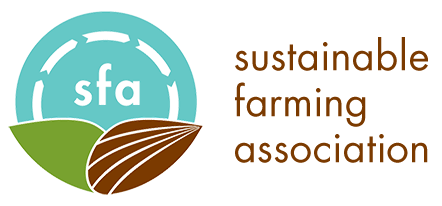Luhman: Soil Health Practices Benefit Communities
 A recent project by Green Lands Blue Waters and the Midwest Perennial Forage Working Group sought to address the damage done by surface water runoff, and they developed the attached graphic. Surface water runoff can be quite destructive to both private and public infrastructure. Did you know that the cost to repair a culvert can cost between $5,200 and $32,200? Resurfacing half a mile of road can cost between $8,000 and $50,000 and bridge replacement or repair can cost as much as $184,000. While increased capacity and strength of infrastructure is a potential solution to the symptom (damaged infrastructure), addressing the root problem (too much surface water runoff) offers a more long term sustainable solution.
A recent project by Green Lands Blue Waters and the Midwest Perennial Forage Working Group sought to address the damage done by surface water runoff, and they developed the attached graphic. Surface water runoff can be quite destructive to both private and public infrastructure. Did you know that the cost to repair a culvert can cost between $5,200 and $32,200? Resurfacing half a mile of road can cost between $8,000 and $50,000 and bridge replacement or repair can cost as much as $184,000. While increased capacity and strength of infrastructure is a potential solution to the symptom (damaged infrastructure), addressing the root problem (too much surface water runoff) offers a more long term sustainable solution.
 How can we infiltrate more water into our soil to reduce surface water runoff? Keeping our soil covered serves the purpose of protecting the soil from the impact of rainfall as well as slowing the flow of water across the land allowing for more time for it to infiltrate. Living plants and roots in the soil for as much of the year as possible feeds soil biology and builds soil structure and aggregates allowing for more water holding capacity and infiltration. Reduced disturbance of the soil keeps pore space and soil structure intact.
How can we infiltrate more water into our soil to reduce surface water runoff? Keeping our soil covered serves the purpose of protecting the soil from the impact of rainfall as well as slowing the flow of water across the land allowing for more time for it to infiltrate. Living plants and roots in the soil for as much of the year as possible feeds soil biology and builds soil structure and aggregates allowing for more water holding capacity and infiltration. Reduced disturbance of the soil keeps pore space and soil structure intact.
We can do these things through increasing the acres we have in perennial forages such as pasture and hay. In cropland, we can implement diverse cropping rotations and integrate cover crops before, during and after the cash crop growing season. The point of sharing this is not to point blame on any group or industry, but to share how exciting it is that we as farmers have the ability to impact our farms and communities! If you have questions about how you can implement soil health principles on your farm please don’t hesitate to give me a call at 507-271-5968 or send an email to jared@sfa-mn.org.
